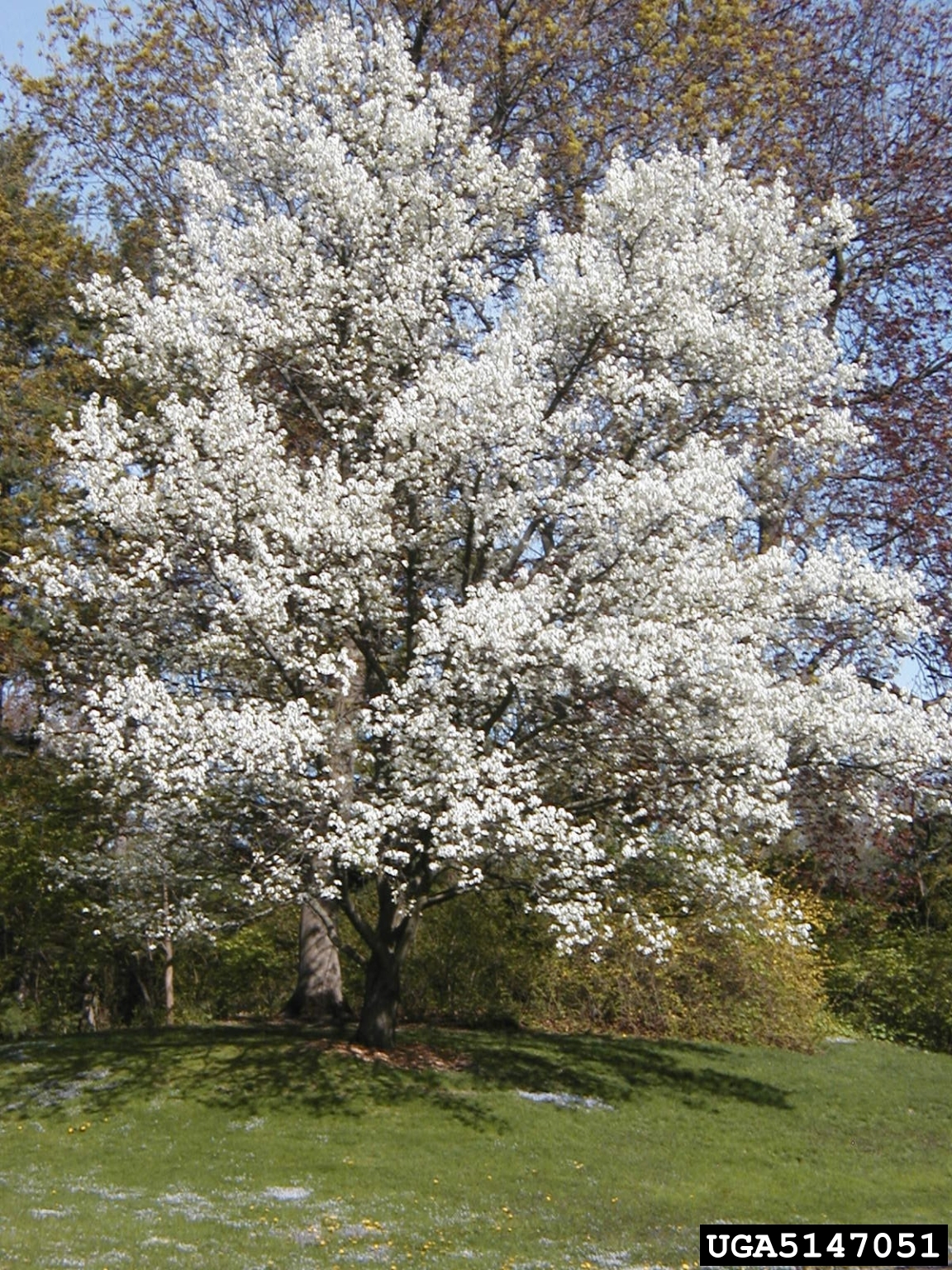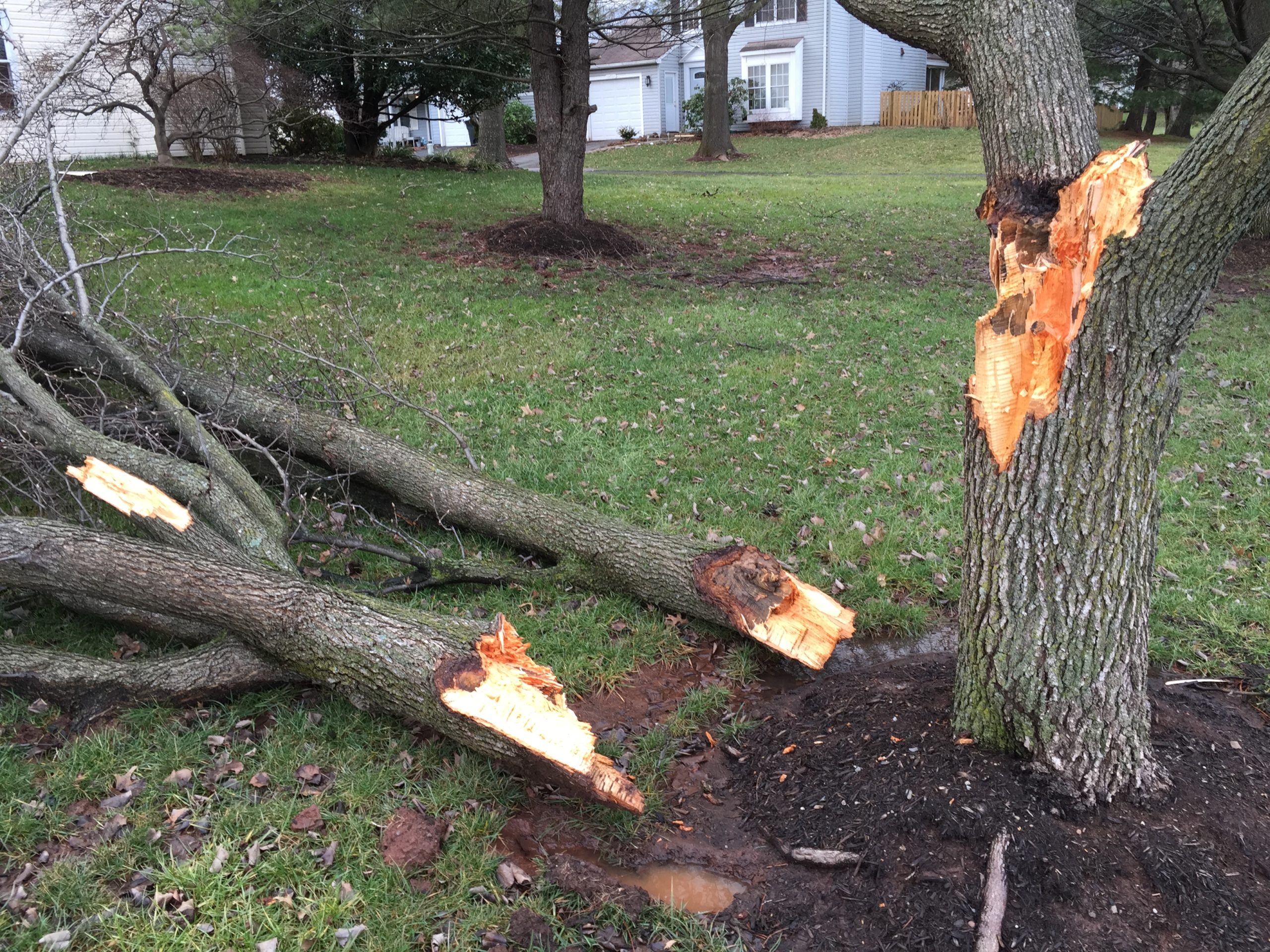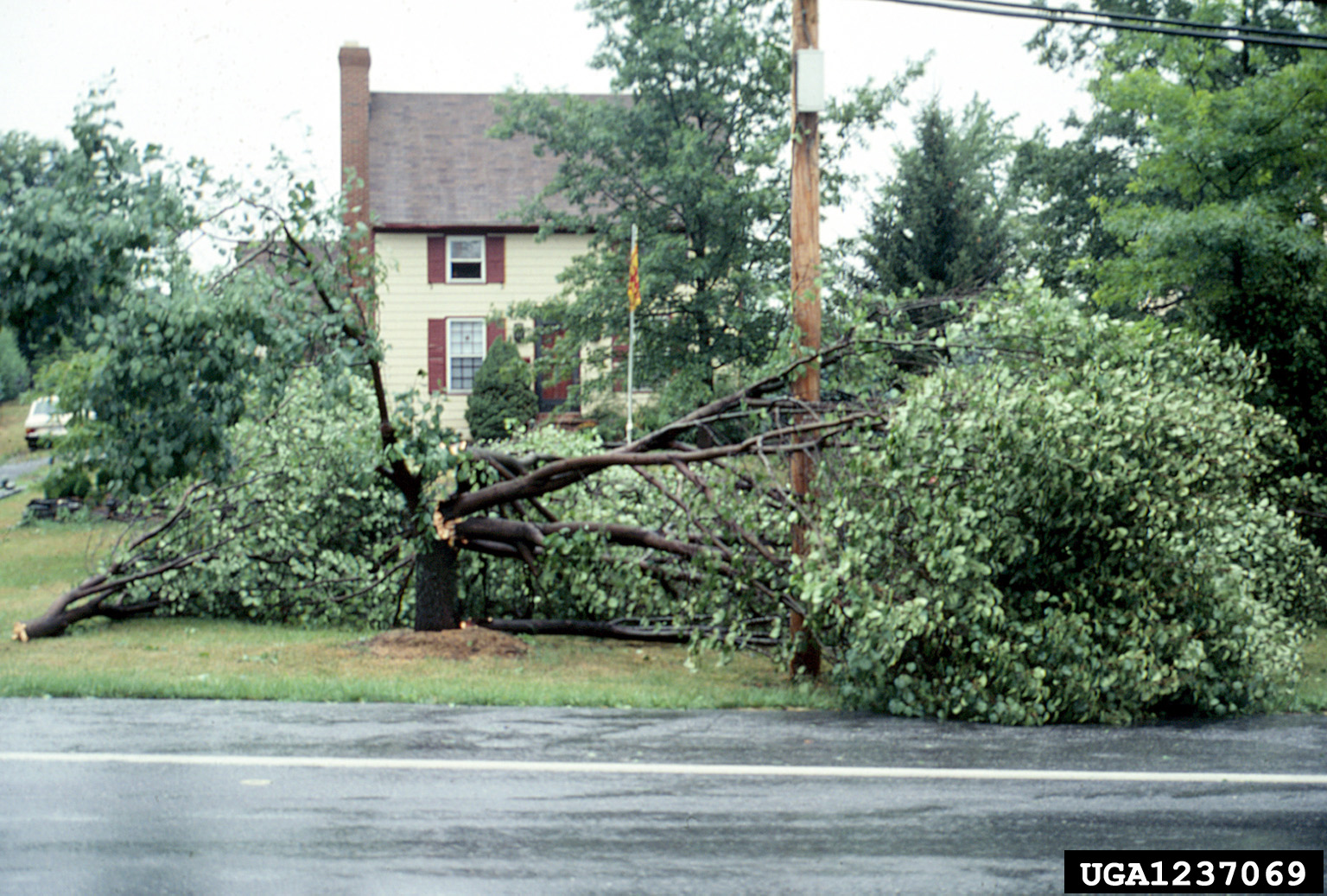Bradford pear (Pyrus calleryana ‘Bradford’) is a spring-flowering tree that has been widely planted throughout the eastern U.S. for many years. ‘Bradford’ is a common cultivar of callery pear. It showcases rapid growth, dense foliage, and showy white flowers. Bradford pear is also relatively pest and disease resistant when compared to other pear cultivars. Those traits make it highly desirable for landscaping. As such, you can see many Bradford pears in Cobb County as specimen, screen, and street trees.

The tree is a nonnative species that was imported to North America from East Asia during the 1960s. Because of its desirable attributes, many landscapers and homeowners planted them. At first, the trees were a huge success! However, it was soon discovered that as the trees matured, they became very prone to splitting. Unfortunately, trunk splits and limb loss often happen when a Bradford pear is 15 years and older. Damage is even more likely when moderate ice and storm events occur. The spring flowers of Bradford pear are also known to have a distinctive smell, which some folks describe as fishy.
Today, Pyrus calleryana and its cultivars are listed on several invasive plant lists in the Southeast. Although the ‘Bradford’ pear was originally bred as sterile and thornless, they cross-pollinate with other cultivars of callery pears. Ripened fruit is readily eaten and disseminated by birds and other small mammals. Deposited seeds result in thick, thorny thickets in open fields, woodlands, and along roadsides. The hybridized callery pears often also have thorns ranging from ¼-inch long to over 2-inches long. This can make their removal quite tricky.

Moving forward, many landscape professionals are avoiding Bradford pear altogether in new plantings. We would like to encourage you to do the same! There are several native ornamentals with many of the traits that make Bradford pear appealing. Some of these species include red buckeye (Aesculus pavia), eastern redbud (Cercis canadensis), downy serviceberry (Amelanchier arborea), white fringe tree (Chionanthus virginicus), various magnolias (Magnolia spp.), and various dogwoods (Cornus spp.).
For more information on Bradford pear and homeowner control practices click HERE.

